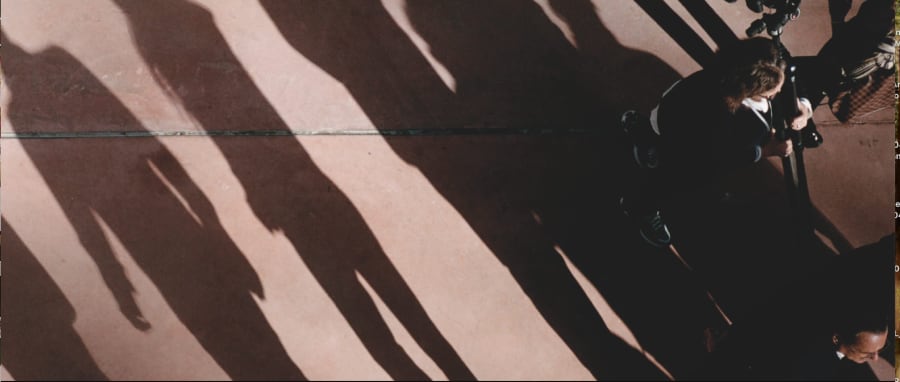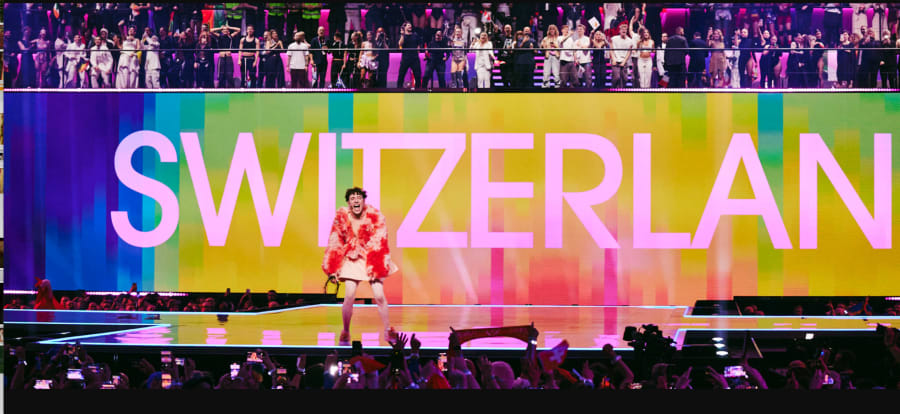When David Hockney began his studies at London’s Royal College of Art in 1959, his tutors often encouraged him to experiment with abstraction. At the time, Abstract Expressionism was the preeminent movement, but the Bradford-born artist, never one to follow trends, decided instead to focus his attention on a model of a human skeleton he found in the college’s cast room. Over a period of several weeks, he drew a number of meticulous studies, revealing his mastery of form and perspective.
For Hockney, who as a child would draw on everything around him – the chest of drawers at the end of his bed, the margins of his brother’s comic books – drawing from observation was far more than a medium. It was, rather, his own distinct way of interpreting the world. By the mid-1970s, as art schools increasingly moved away from academic drawing instruction, Hockney continued to champion figurative line work. For him, ‘teaching drawing is teaching people to look.’
Just as draftsmanship remains a foundational element of Hockney’s practice, for many artists, drawing is both an exploratory tool and a way to shape and refine their visual language. For collectors, drawing – often regarded as the most personal of mediums – holds a unique intimacy, offering a direct line to the artist’s hand and mind. Its raw immediacy provides a glimpse into an artist’s process and gesture.
For Iran-born artist Armineh Negahdari, drawing is less a methodical exercise than a visceral act – an urgent, almost physical release. Her mark-making – scribbled lines, smudges, blurs – pulses with an instinctive, feverish energy. In many of her drawings, figures appear fragmented and distorted, their bodies twisting and contorting as if buckling under invisible pressure. ‘I see the strength of my drawings as feminine,’ she says, in reference to her practice’s themes of repression, resistance, and the fluidity of identity. ‘My work is shaped by my reality as a woman and as an Iranian.’
Now based in Bordeaux, Negahdari – who is represented by Marcelle Alix and will have a dedicated solo booth at this year’s Art Basel in Basel – was born in Tehran in 1994 and studied at the Tehran School of Fine Arts. The institution is known for its strict rules – artists cannot depict the nude figure in any form – but Negahdari credits her years spent drawing ‘from live models and still lifes’ as the reason why she could move beyond mere representation ‘toward a more personal, expressive relationship with form, a chance to surrender and assert control within the creative process.’
For many artists, the convenience of drawing makes it a highly accessible medium: ‘You can always find a pencil and a piece of paper,’ says Negahdari, ‘that’s incredibly powerful.’ That versatility was important, too, for the Iraqi-German artist and activist Lin May Saeed, who passed away in 2023 at the age of 50, just as her work was gaining international recognition. According to Jacky Strenz, founder of the eponymous gallery that represents the artist’s estate: ‘She was mainly a sculptor, but she valued drawing because she could do it anywhere, and it offered a narrative clarity that would be difficult to achieve in sculpture alone.’
At Art Basel in Basel, a solo booth will feature her celebrated Styrofoam reliefs and bronze sculptures, often featuring animals and their relationships to humans, alongside two works on paper, Liberator and Mouse (2021) and Pangolin (2020). ‘She always started by sketching,’ says Strenz. ‘It was her foundation. We have about 20 studies from when she first started exploring the pangolin as a subject – how it moves, how it’s built. It’s actually a very classical approach to sculpture: First you draw, then make a model, and only then move to a full-scale piece. For Saeed, this process wasn’t just about form – it was about storytelling.’
Strenz is including one of Saeed’s protest posters in the gallery’s Art Basel presentation: mounted on the end of a wooden pole, two pert, inquisitive fox heads stare out from the reinforced paper. ‘But it’s not for sale,’ Strenz adds quickly. ‘Saeed was vegan, and I wanted to highlight her activism too.’ Saeed was always meticulous about materials, distinguishing between the thin, 80-gsm paper she used for sketches and the heavier brown stock reserved for finished drawings. In Pangolin, a perfect bite mark has been nibbled out of the corner – credited, fittingly, to the artist’s pet rabbit, Sami. Demand for those works on paper is high. ‘But there aren’t many,’ Strenz laments. ‘It took her so much time to make sculptures and reliefs, we have only around 40 drawings altogether.’
It is often forgotten that artists can invest just as much time and creative energy into a work on paper as they would a painting – a fact confirmed by Matthias Kunz from Knust Kunz Gallery Editions: ‘When you consider how an artist approaches carving wood or the techniques needed to create a flowing line in a painting,’ he adds, ‘you can really observe and experience that same intensity in a print or a drawing.’ In the Editions sector at Art Basel in Basel this year, the Munich-based gallery will present a varied selection, including works by Jenny Brosinski, Blinky Palermo, and a series by Imi Knoebel called the ‘Rote Konstellation’ (1975–85); notable, says Kunz, for being ‘an intriguing combination of drawing and print work.’ The affordability of limited editions and works on paper has traditionally made these formats an ideal entry point for first-time and emerging collectors: ‘In terms of engaging with younger collectors, or giving them opportunities to ask questions and get advice, a focus on works on paper is incredibly helpful because it always encourages conversation.’
Kunz believes the cost of prints and works on paper makes them a more viable option with less fluctuation in value, especially with the art market in a state of flux, as it is now. ‘We’ve been showing a mixture of print work and drawings at art fairs, and it’s attracting a lot of collectors. The element of surprise is important – you see a booth, spot a fantastic work on paper, you check the label and realize it’s by a well-known artist. Then you ask for the price and, somehow, it’s still within reach.’
Many seasoned collectors have strong affinities for works on paper, some even choose to build their entire collections around them. This is not just limited to drawings, but also prints in their myriad forms – ranging from manual formats, like woodblock, to mechanical printmaking, including monotypes and screenprinting. ‘We love to pair artists with specific printers and see what can develop from that collaboration.’ Knuz adds. ‘The ideal situation is when the artist comes away saying, “I love that. I learned something from that experience.” Even if they were familiar with the technique, something totally unexpected can happen. That’s what we’re always hoping for.’
A surprising number of artists produce prints for the sheer love of materiality. Andy Warhol was famous for his printed multiples, but many contemporary artists better known for working in other mediums, such as painter Julie Mehretu, also look forward to the intimacy and immediacy of printmaking between large-scale projects. ‘When you understand how painting allows for freedom in color, gesture, and composition, you begin to see how an artist must completely rethink those elements in a print,’ says Kunz. ‘The challenge becomes: How do I translate my ideas within the constraints of this method? And then you see how brilliantly some artists achieve a certain surface or atmosphere. There’s just so much to discuss when you’re standing in front of a really well-executed print.’
Duncan Ballantyne-Way is a writer, editor, and art critic based in Berlin.
Caption for top image: Austin Eddy, Anxiety (detail), 2024. Courtesy of Knust Kunz Gallery Editions.
Published on May 20, 2025.


